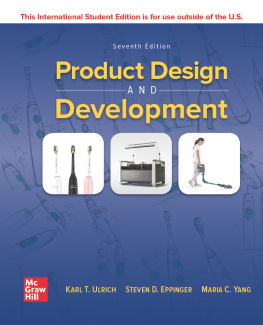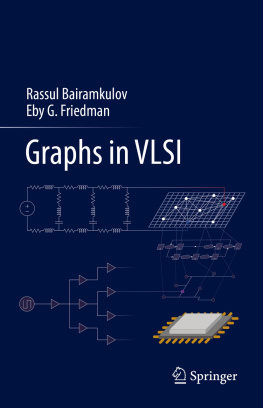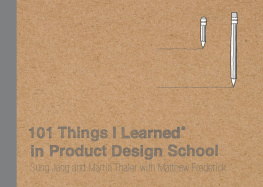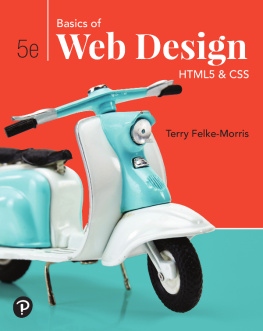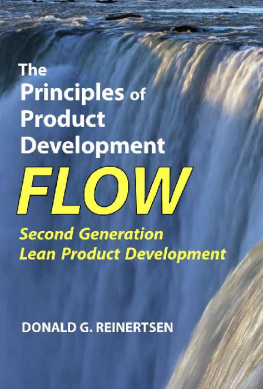Karl Ulrich - Product Design and Development, 7th Edition
Here you can read online Karl Ulrich - Product Design and Development, 7th Edition full text of the book (entire story) in english for free. Download pdf and epub, get meaning, cover and reviews about this ebook. year: 2019, genre: Computer. Description of the work, (preface) as well as reviews are available. Best literature library LitArk.com created for fans of good reading and offers a wide selection of genres:
Romance novel
Science fiction
Adventure
Detective
Science
History
Home and family
Prose
Art
Politics
Computer
Non-fiction
Religion
Business
Children
Humor
Choose a favorite category and find really read worthwhile books. Enjoy immersion in the world of imagination, feel the emotions of the characters or learn something new for yourself, make an fascinating discovery.
- Book:Product Design and Development, 7th Edition
- Author:
- Genre:
- Year:2019
- Rating:4 / 5
- Favourites:Add to favourites
- Your mark:
- 80
- 1
- 2
- 3
- 4
- 5
Product Design and Development, 7th Edition: summary, description and annotation
We offer to read an annotation, description, summary or preface (depends on what the author of the book "Product Design and Development, 7th Edition" wrote himself). If you haven't found the necessary information about the book — write in the comments, we will try to find it.
Product Design and Development, 7th Edition — read online for free the complete book (whole text) full work
Below is the text of the book, divided by pages. System saving the place of the last page read, allows you to conveniently read the book "Product Design and Development, 7th Edition" online for free, without having to search again every time where you left off. Put a bookmark, and you can go to the page where you finished reading at any time.
Font size:
Interval:
Bookmark:

page i
Product Design and Development
Seventh Edition
Karl T. Ulrich
University of Pennsylvania
Steven D. Eppinger
Massachusetts Institute of Technology
Maria C. Yang
Massachusetts Institute of Technology

page ii

PRODUCT DESIGN AND DEVELOPMENT
Published by McGraw-Hill Education, 2 Penn Plaza, New York, NY 10121. Copyright 2020 by McGraw-Hill Education. All rights reserved. Printed in the United States of America. No part of this publication may be reproduced or distributed in any form or by any means, or stored in a database or retrieval system, without the prior written consent of McGraw-Hill Education, including, but not limited to, in any network or other electronic storage or transmission, or broadcast for distance learning.
Some ancillaries, including electronic and print components, may not be available to customers outside the United States.
This book is printed on acid-free paper.
1 2 3 4 5 6 7 8 9 LCR 21 20 19
ISBN 978-1-260-56643-7
MHID 1-260-56643-9
Cover Image: Toothbrushes:Koninklijke Philips NV; Hopper:Wazer, Inc.; Vacuum:SharkNinja
All credits appearing on page or at the end of the book are considered to be an extension of the copyright page.
The Internet addresses listed in the text were accurate at the time of publication. The inclusion of a website does not indicate an endorsement by the authors or McGraw-Hill Education, and McGraw-Hill Education does not guarantee the accuracy of the information presented at these sites.
mheducation.com/highered
page iii
To the professionals who shared their experiences with us and to the product development teams we hope will benefit from those experiences.
page iv
About the Authors
Karl T. Ulrich University of Pennsylvania
is the CIBC Professor and Vice Dean of Innovation at the Wharton School at the University of Pennsylvania and is also Professor of Mechanical Engineering. He received the S.B., S.M., and Sc.D. degrees in Mechanical Engineering from MIT. Professor Ulrich has led the development efforts for many products, including medical devices and sporting goods, and is the founder of several technology-based companies. As a result of this work, he has received more than 24 patents. His current research concerns technological innovation, product design, and entrepreneurship.
Steven D. Eppinger Massachusetts Institute of Technology
is the General Motors LGO Professor of Management Science and Innovation at the Massachusetts Institute of Technology Sloan School of Management. He received the S.B., S.M., and Sc.D. degrees in Mechanical Engineering from MIT and served as Deputy Dean of the MIT Sloan School for five years. He specializes in the management of complex product development processes and has worked extensively with the automobile, electronics, aerospace, medical devices, and capital equipment industries. His current research is aimed at the creation of improved product development practices, systems engineering methods, and project management techniques.
Maria C. Yang Massachusetts Institute of Technology
is Professor of Mechanical Engineering and MacVicar Faculty Fellow at the Massachusetts Institute of Technology. She earned an S.B. from MIT and M.S. and Ph.D. from Stanford University, all in Mechanical Engineering. Her research investigates how early stage design process drives innovation. Her work spans product design to complex engineering systems, with applications in aerospace, energy, and water. She is an ASME Fellow and a recipient of the NSF CAREER award. Yang has previously served as director of design at a Silicon Valley start-up and cofounded a consumer product start-up.
page v
Preface
This book contains material developed for use in the interdisciplinary courses on product development that we teach. Participants in these courses include graduate students in engineering, industrial design students, and MBA students. While we aimed the book at interdisciplinary graduate-level audiences such as this, many faculty teaching graduate and undergraduate courses in engineering design have also found the material useful. Product Design and Development is also for practicing professionals. Indeed, we could not avoid writing for a professional audience, because most of our students are themselves professionals who have worked either in product development or in closely related functions.
This book blends the perspectives of marketing, design, and manufacturing into a single approach to product development. As a result, we provide students of all kinds with an appreciation for the realities of industrial practice and for the complex and essential roles played by the various members of product development teams. For industrial practitioners, in particular, we provide a set of product development methods that can be put into immediate practice on development projects.
A debate often heard in the academic community relates to whether design should be taught primarily by establishing a foundation of theory or by engaging students in loosely supervised practice. For the broader activity of product design and development, we reject both approaches when taken to their extremes. Theory without practice is ineffective because there are many nuances, exceptions, and subtleties to be learned in practical settings and because some necessary tasks simply lack sufficient theoretical underpinnings. Practice without guidance can too easily result in frustration and fails to exploit the knowledge that successful product development professionals and researchers have accumulated over time. Product development, in this respect, is like sailing: proficiency is gained through practice, but some theory of how sails work and some instruction in the mechanics (and even tricks) of operating the boat help tremendously.
We attempt to strike a balance between theory and practice through our emphasis on methods. The methods we present are typically step-by-step procedures for completing tasks, but rarely embody a clean and concise theory. In some cases, the methods are supported in part by a long tradition of research and practice, as in the chapter on product development economics. In other cases, the methods are a distillation of relatively recent and ad hoc techniques, as in the chapter on design for environment. In all cases, the methods provide a concrete approach to solving a product development problem. In our experience, product development is best learned by applying structured methods to ongoing project work in either industrial or academic settings. Therefore, we intend this book to be used as a guide to completing development tasks either in the context of a course project or in industrial practice.
An industrial example or case study illustrates every method in the book. We chose to use different products as the examples for each chapter rather than carrying the same example through the entire book. We provide this variety because we think it makes the page vi book more interesting and because we hope to illustrate that the methods can be applied to a wide range of products, from industrial equipment to consumer products.
We designed the book to be extremely modularit consists of 19 independent chapters. Each chapter presents a development method for a specific portion of the product development process. The primary benefit of the modular approach is that each chapter can be used independently of the rest of the book. This way, faculty, students, and practitioners can easily access the material they find most useful.
Next pageFont size:
Interval:
Bookmark:
Similar books «Product Design and Development, 7th Edition»
Look at similar books to Product Design and Development, 7th Edition. We have selected literature similar in name and meaning in the hope of providing readers with more options to find new, interesting, not yet read works.
Discussion, reviews of the book Product Design and Development, 7th Edition and just readers' own opinions. Leave your comments, write what you think about the work, its meaning or the main characters. Specify what exactly you liked and what you didn't like, and why you think so.

